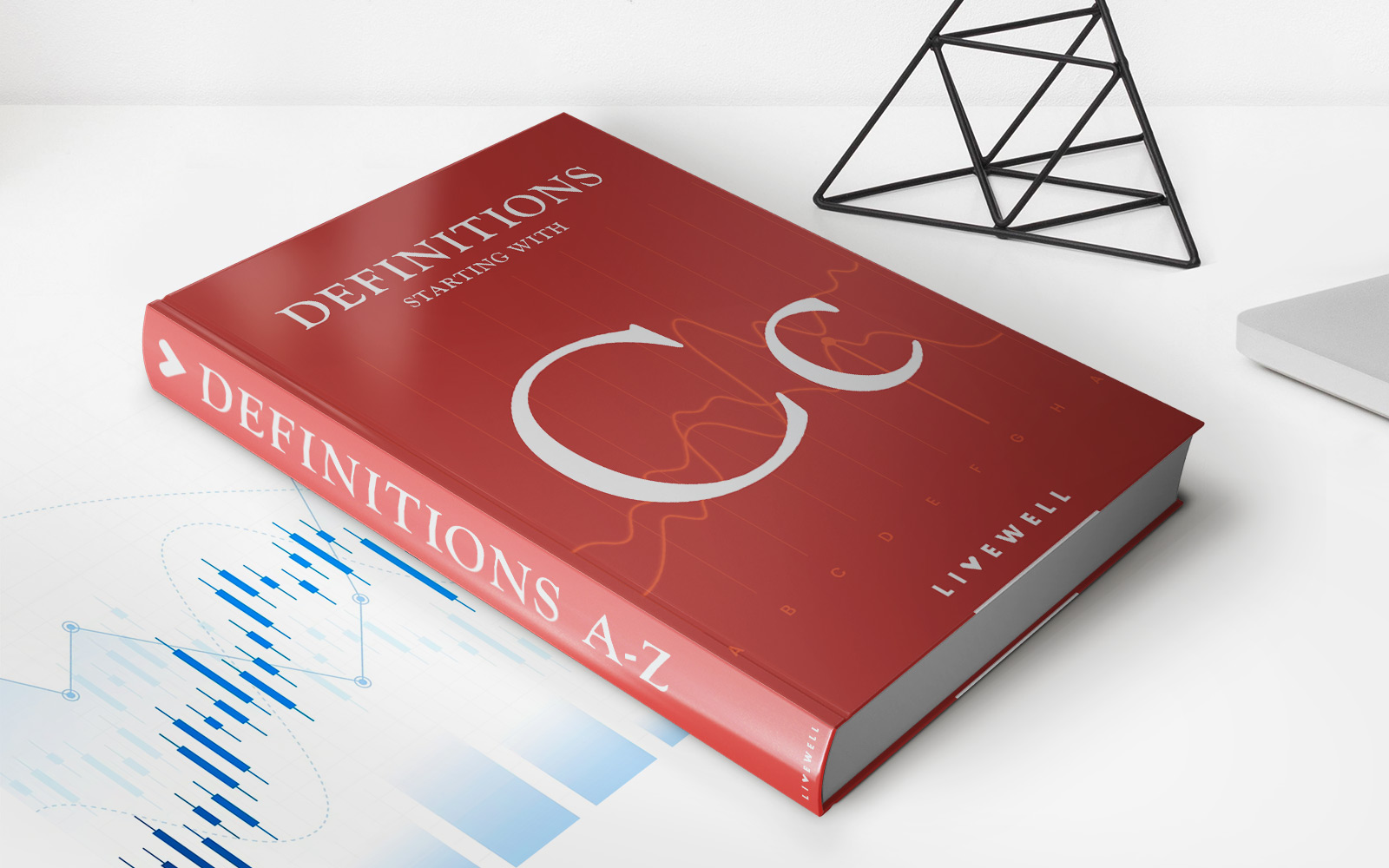

Finance
What Is Depreciation Value Insurance Claim
Published: November 13, 2023
Learn about depreciation value insurance claims in finance and how they can help protect your assets and financial investments.
(Many of the links in this article redirect to a specific reviewed product. Your purchase of these products through affiliate links helps to generate commission for LiveWell, at no extra cost. Learn more)
Table of Contents
- Introduction
- What is Depreciation Value Insurance Claim?
- Depreciation Value and its Importance
- Types of Depreciation Value Insurance Claims
- How to File a Depreciation Value Insurance Claim
- Factors Considered in Depreciation Value Assessment
- Common Mistakes to Avoid in Depreciation Value Insurance Claims
- Tips for Maximizing Depreciation Value Insurance Claims
- Frequently Asked Questions (FAQs)
- Conclusion
Introduction
Welcome to the world of depreciation value insurance claims! If you’ve ever owned an asset such as a property or a vehicle, you are likely aware that its value will decrease over time due to wear and tear, age, or obsolescence. This decrease in value is known as depreciation.
Depreciation can have a significant impact on your financial well-being, especially when it comes to making insurance claims. When you file an insurance claim, you are usually reimbursed for the loss or damage suffered. However, the amount you receive may not cover the full replacement cost of the asset due to depreciation. This is where depreciation value insurance claims come into play.
Depreciation value insurance claims are a way to recover the lost value of an asset due to depreciation. They are designed to bridge the gap between the initial purchase price of the asset and its current depreciated value. By filing a depreciation value insurance claim, you can ensure that you are adequately compensated when it comes to replacing or repairing your asset.
Depreciation value insurance claims are not limited to any specific type of asset. Whether you have a car, a home, or even a business equipment, you can make a depreciation value insurance claim to receive the appropriate compensation for the asset’s diminished value.
In the following sections, we will dive deeper into what depreciation value insurance claims entail, why they are important, and how you can maximize your claim to get the most out of your insurance coverage. We will also discuss the common mistakes to avoid and provide helpful tips to navigate the claim process successfully. So, let’s get started!
What is Depreciation Value Insurance Claim?
A depreciation value insurance claim is a type of insurance claim that compensates policyholders for the diminishing value of their assets due to depreciation. When you purchase an asset, its value starts to decrease as time goes on, often due to factors such as wear and tear, age, or technological advancements that render it less valuable. If you experience loss or damage to such an asset and file an insurance claim, the payout you receive may only cover the current depreciated value, rather than the original purchase price.
Depreciation value insurance claims are designed to address this discrepancy. By filing a claim specifically focused on the depreciation value of the asset, policyholders can ensure that they receive adequate compensation to cover the gap between the depreciated value and the original purchase price. This allows them to not only repair or replace the damaged asset but also account for the loss in value that occurred over time.
Depreciation value insurance claims are commonly associated with assets such as vehicles, homes, and business equipment. For example, if you own a car that has been involved in an accident, the insurance payout you would typically receive may only cover the current market value of the vehicle at the time of the accident. However, if you have depreciation value insurance coverage, you can file a separate claim to recover the diminished value of the car caused by the accident.
It’s important to note that depreciation value insurance claims are separate from standard insurance claims. While traditional insurance claims focus on the repair or replacement cost of the asset, depreciation value claims address the reduction in value specifically due to depreciation. This ensures that policyholders are adequately compensated for the true financial impact of the loss or damages to their assets.
Next, let’s explore why depreciation value insurance claims are important and how they can benefit policyholders in various scenarios.
Depreciation Value and its Importance
Depreciation refers to the decrease in the value of an asset over time due to various factors such as wear and tear, age, and technological advancements. It is a natural and expected part of asset ownership, and understanding the concept of depreciation value is crucial when it comes to insurance claims.
The importance of considering depreciation value lies in the fact that it affects the true worth of an asset. When you purchase an asset, especially a high-value one like a car or a property, it is essential to recognize that its value will decrease over time. This depreciation can significantly impact your finances if your asset is damaged, lost, or stolen.
When filing an insurance claim, the insurance company typically looks at the depreciated value of the asset at the time of the incident. This means that if your asset is five years old and has experienced significant wear and tear, the insurance payout you receive may not fully cover the cost of repairing or replacing it at its current market value. This is where a depreciation value insurance claim becomes crucial.
A depreciation value insurance claim allows you to recover the lost value of your asset due to depreciation. By accounting for the diminished worth, the insurance company will provide you with compensation that bridges the gap between the depreciated value and the original purchase price. This ensures that you are not left with a financial burden simply because your asset has naturally lost value over time.
Additionally, depreciation value insurance claims can be particularly significant when it comes to selling or disposing of an asset. If you decide to sell your asset, potential buyers will take into account its age, condition, and market value, which is heavily influenced by depreciation. By having depreciation value insurance coverage, you can protect yourself from potential losses by ensuring that the compensation you receive adequately reflects the true worth of the asset, including its depreciation.
Overall, understanding depreciation value and its importance in insurance claims allows you to have a comprehensive view of the financial impact of asset damage or loss. It empowers you to seek appropriate compensation that not only covers the immediate repair or replacement costs but also accounts for the diminished value caused by depreciation.
Next, let’s explore the different types of depreciation value insurance claims you may encounter.
Types of Depreciation Value Insurance Claims
When it comes to depreciation value insurance claims, there are several types that you may encounter depending on the nature of the asset and the insurance coverage you have. Understanding these types can help you navigate the claims process more effectively. Here are a few common types of depreciation value insurance claims:
- Auto Depreciation Value Insurance Claims: These claims are specific to vehicles and address the diminished value of a car after an accident or other damaging event. Even after a thorough repair, a car’s value may be lower due to its accident history. Auto depreciation value insurance claims compensate policyholders for this depreciation so they are not left with a lower-value vehicle.
- Property Depreciation Value Insurance Claims: When it comes to homes or commercial properties, depreciation value insurance claims provide coverage for the loss of value caused by factors such as age, wear and tear, or natural disasters. If your property is damaged, the claim will account for the depreciated value, ensuring you receive adequate compensation to repair or replace the property.
- Business Equipment Depreciation Value Insurance Claims: For business owners, equipment represents a significant investment. Depreciation value insurance claims for business equipment cover the loss of value due to depreciation caused by factors such as wear and tear, technological advancements, or obsolescence. This type of claim can help business owners recover the diminished worth of their equipment after damage or loss.
- Electronic Device Depreciation Value Insurance Claims: With the ever-evolving world of technology, electronic devices become outdated quickly. Depreciation value insurance claims for electronic devices help policyholders recover the loss in value due to technological advancements or wear and tear. Whether it’s a smartphone, a laptop, or other electronic gadgets, this type of claim ensures fair compensation for the depreciation of such devices.
- Other Asset-Specific Depreciation Value Insurance Claims: Depending on your policy and the items you have insured, there may be other asset-specific depreciation value insurance claims available to you. These can include claims for artwork, collectibles, jewelry, and other high-value assets that are subject to depreciation over time.
It’s important to note that the availability and coverage of depreciation value insurance claims may vary depending on your policy and insurance provider. Consulting with your insurance agent or reviewing your policy documents can help you understand the specific types of depreciation value claims that are applicable to your coverage.
Now that you are familiar with the types of depreciation value insurance claims, let’s delve into the process of filing such claims.
How to File a Depreciation Value Insurance Claim
Filing a depreciation value insurance claim may seem like a complex process, but with the right knowledge and preparation, it can be relatively straightforward. Here are the general steps to follow when filing a depreciation value insurance claim:
- Contact Your Insurance Provider: The first step is to notify your insurance provider about the incident or damage to your asset. Provide them with all the necessary details, such as the date, time, and cause of the loss or damage. Make sure to mention that you are filing a depreciation value insurance claim so that your insurance provider can guide you through the process.
- Gather Documentation: To support your depreciation value insurance claim, gather all relevant documentation related to the asset. This can include the original purchase receipts, maintenance records, photographs of the asset before the incident, and any repair or valuation reports. These documents will help establish the value of the asset at the time of purchase and assess its current depreciated value.
- Assessment and Valuation: Once you have notified your insurance provider and provided the necessary documentation, they will assess the depreciation value of your asset. This involves calculating the difference between the original purchase price and the current depreciated value. Insurance adjusters or valuation experts may be involved in this process to ensure an accurate assessment.
- Review Your Policy Coverage: Familiarize yourself with the terms and conditions of your insurance policy, specifically regarding depreciation value coverage. Understand the limits and exclusions that may apply to your claim. This will help you assess whether the compensation offered by the insurance provider aligns with your policy coverage.
- Negotiation and Claim Settlement: If there are any discrepancies or disagreements regarding the depreciation value assessment or compensation, engage in a negotiation process with your insurance provider. Provide additional evidence or expert opinions if necessary to support your claim. Aim to reach a fair settlement amount that adequately covers the depreciated value of your asset.
- Claim Approval and Payment: Once the depreciation value insurance claim has been approved and a settlement amount has been agreed upon, the insurance provider will proceed with processing the payment. This may be a lump sum payment or multiple installments, depending on the terms of your policy. Ensure that you have a clear understanding of the payment timeline and any deductibles or fees that may be applicable.
It’s important to note that the specific steps and requirements for filing a depreciation value insurance claim may vary depending on your insurance provider and policy. It is advisable to consult your insurance agent or review your policy documents for detailed instructions on how to file such a claim.
Now that you understand the process of filing a depreciation value insurance claim, let’s explore the factors considered in the assessment of depreciation value.
Factors Considered in Depreciation Value Assessment
When assessing the depreciation value of an asset for an insurance claim, various factors are taken into consideration. These factors help determine the extent of depreciation and the compensation amount policyholders are entitled to receive. Here are some key factors that insurance providers typically consider during the depreciation value assessment:
- Age of the Asset: The age of the asset is a primary factor in determining its depreciation value. Generally, the older an asset is, the higher the depreciation. This is because older assets are more likely to have experienced wear and tear, technological advancements may have made them less valuable, or their design might have become outdated.
- Condition of the Asset: The condition of the asset plays a significant role in assessing its depreciation value. Assets that have been well-maintained and are in good condition will have a lower depreciation value compared to those that show signs of wear and tear or damage. The insurance provider will consider any pre-existing damage or the extent of damage caused by the incident when evaluating the asset’s condition.
- Market Value: The current market value of the asset is another crucial factor in depreciation value assessment. Market trends, demand, and supply conditions can influence the value of an asset. If the market value has significantly decreased since the asset was purchased, it will impact the extent of depreciation and the compensation amount.
- Residual Value: The residual value refers to the estimated value of the asset at the end of its useful life. This value is considered in depreciation value assessment as it represents the remaining worth of the asset after accounting for depreciation over time. The higher the residual value, the lower the depreciation value.
- Repair History and Maintenance: The repair history and maintenance records of the asset are taken into account to assess its depreciation value. Regular maintenance and timely repairs can mitigate the depreciation of an asset, as they help maintain its condition and functionality. Insurance providers may request maintenance records to understand the asset’s history and determine the impact of upkeep on its depreciation.
These factors are typically evaluated collectively to estimate the depreciation value of the asset. Insurance adjusters or valuation experts may be involved in the assessment process to ensure an accurate evaluation. It is important to provide detailed documentation and information regarding the asset to support the assessment and ensure fair compensation.
Understanding the factors considered in the depreciation value assessment can help you navigate the claim process effectively and negotiate a fair settlement amount. Next, we will discuss some common mistakes to avoid when filing depreciation value insurance claims.
Common Mistakes to Avoid in Depreciation Value Insurance Claims
When filing a depreciation value insurance claim, it is crucial to avoid certain common mistakes that can potentially impact the outcome of your claim. By being aware of these pitfalls, you can ensure a smoother claims process and maximize your chances of receiving fair compensation. Here are some common mistakes to avoid in depreciation value insurance claims:
- Failure to File the Claim Promptly: It is important to notify your insurance provider and file the depreciation value insurance claim as soon as possible after the incident or damage occurs. Delaying the claim filing can lead to complications and may even result in denial of the claim, as the insurance provider may question the cause or severity of the damage.
- Inadequate Documentation: Having proper documentation is crucial to support your depreciation value claim. Failing to provide sufficient evidence, such as original purchase receipts, maintenance records, or expert assessments, can weaken your claim. Take the time to gather all relevant documents that demonstrate the asset’s original value and its current depreciated value.
- Not Understanding Policy Coverage: Each insurance policy has specific terms and conditions regarding depreciation value coverage. Make sure you understand your policy and its coverage limits, as well as any exclusions or deductibles. Failure to grasp these details could lead to unrealistic expectations or the submission of an invalid claim.
- Overlooking Pre-Existing Damage: If your asset had pre-existing damage prior to the incident, be sure to disclose this to your insurance provider. Failing to mention pre-existing damage can lead to complications during the claim process, as the insurance provider may question whether the damage is a result of the incident or was already present.
- Not Consulting with Experts: In complex cases or situations where the asset’s depreciation value is difficult to determine, it is advisable to consult with relevant experts, such as appraisers or specialists. Their professional opinions can provide valuable support for your claim and improve your chances of receiving fair compensation.
By avoiding these common mistakes, you can strengthen your depreciation value insurance claim and increase your likelihood of a successful outcome. Ensure that you follow the correct procedures, provide accurate information, and communicate openly and transparently with your insurance provider throughout the claim process.
Next, let’s explore some useful tips for maximizing depreciation value insurance claims.
Tips for Maximizing Depreciation Value Insurance Claims
When it comes to maximizing your depreciation value insurance claim, there are strategic steps you can take to ensure you receive the maximum compensation for the depreciated value of your asset. Consider these helpful tips to optimize your claim:
- Gather Comprehensive Documentation: Provide detailed and comprehensive documentation to support your claim. This includes proof of purchase, maintenance records, photographs, repair estimates, and any other relevant evidence. The more evidence you have, the stronger your claim will be.
- Get Professional Evaluations: Consider obtaining professional evaluations or appraisals of your asset to determine its current depreciated value accurately. These evaluations can help provide an independent assessment that supports your claim and increases the credibility of your valuation.
- Review your Policy Coverage: Familiarize yourself with the coverage limits and terms of your depreciation value insurance policy. Understanding the extent of coverage available to you can ensure that you receive the rightful amount of compensation. Consult with your insurance agent if you have any uncertainties or questions.
- Engage in Negotiations: If you believe the initial compensation offered for your depreciation value claim is insufficient, engage in negotiations with your insurance provider. Present any additional evidence or expert opinions that support a higher valuation. Be persistent and advocate for a fair settlement based on the true worth of your asset.
- Consider Professional Assistance: In complex cases or situations where you encounter challenges in the claim process, consider seeking the help of a public adjuster or a legal professional with expertise in insurance claims. They can guide you through the process, negotiate on your behalf, and ensure that you receive fair compensation for the depreciation of your asset.
By implementing these tips, you can maximize your depreciation value insurance claim and ensure that you receive proper compensation for the diminished value of your asset. Remember to stay organized, be proactive, and advocate for your rights throughout the claim process.
Now that we have covered tips for maximizing your claim, let’s address some frequently asked questions about depreciation value insurance claims.
Frequently Asked Questions (FAQs)
Here are answers to some frequently asked questions regarding depreciation value insurance claims:
- What is the difference between a standard insurance claim and a depreciation value insurance claim?
- Do all insurance policies cover depreciation value?
- Can I file a depreciation value insurance claim for an asset that was already depreciated at the time of purchase?
- Is there a time limit for filing a depreciation value insurance claim?
- Can I dispute the assessment of the depreciation value by the insurance adjuster?
- Is it possible to increase the depreciation value coverage in my insurance policy?
A standard insurance claim typically covers the cost of repair or replacement of the asset, whereas a depreciation value insurance claim focuses specifically on compensating for the diminished value of the asset due to depreciation.
No, not all insurance policies include coverage for depreciation value. You need to check your specific policy to determine if depreciation value coverage is included or if it needs to be added as an additional endorsement.
Generally, depreciation value insurance claims are filed for assets that were initially purchased at a higher value and experienced further depreciation due to an incident or damage. However, coverage can vary depending on your insurance policy, so it’s best to consult your insurance provider for specific details.
There is usually a time limit for filing any insurance claim, including depreciation value claims. It is essential to notify your insurance provider and file the claim as soon as possible after the incident to avoid any potential complications or denial of the claim. Check your policy for specific deadlines.
Yes, if you disagree with the assessment of the depreciation value by the insurance adjuster, you can dispute it. Provide any additional evidence, expert opinions, or valuation reports that support your claim for a higher depreciation value. Engaging in negotiations with your insurance provider can help in reaching a fair settlement.
Depending on your insurance provider and the terms of your policy, you may be able to increase the depreciation value coverage by adding an endorsement or rider to your existing policy. Contact your insurance agent to discuss your options.
These are just a few common questions regarding depreciation value insurance claims. It is essential to review your specific policy and consult with your insurance provider for further information and clarification tailored to your situation.
Next, let’s conclude our discussion on depreciation value insurance claims.
Conclusion
Depreciation value insurance claims play a crucial role in ensuring that policyholders are adequately compensated for the diminished value of their assets due to depreciation. By filing such claims, individuals and businesses can bridge the gap between the original purchase price and the current depreciated value, protecting themselves from financial losses.
Throughout this article, we have explored what depreciation value insurance claims entail, their importance, and the different types of claims that can be filed for various assets. We have also discussed the steps involved in filing a depreciation value insurance claim, the factors considered in the assessment of depreciation value, common mistakes to avoid, and tips for maximizing your claim.
Understanding the nuances of depreciation value insurance claims is key to navigating the claims process successfully. By providing comprehensive documentation, seeking professional evaluations, reviewing your policy coverage, engaging in negotiations, and considering expert assistance when needed, you can maximize your chances of receiving fair compensation for the diminished value of your asset.
Remember to be proactive, organized, and transparent throughout the claim process. Familiarize yourself with your insurance policy, ask questions when in doubt, and maintain open communication with your insurance provider. This will help ensure a smoother claims process and a favorable outcome.
In conclusion, depreciation value insurance claims offer financial protection by addressing the impact of depreciation on the value of your assets. By being knowledgeable and proactive, you can effectively assert your rights and receive appropriate compensation to repair, replace, or recover the diminished value of your assets.
As always, it is advisable to consult with your insurance agent or professional advisors for personalized guidance and advice regarding depreciation value insurance claims specific to your policy and circumstances.














